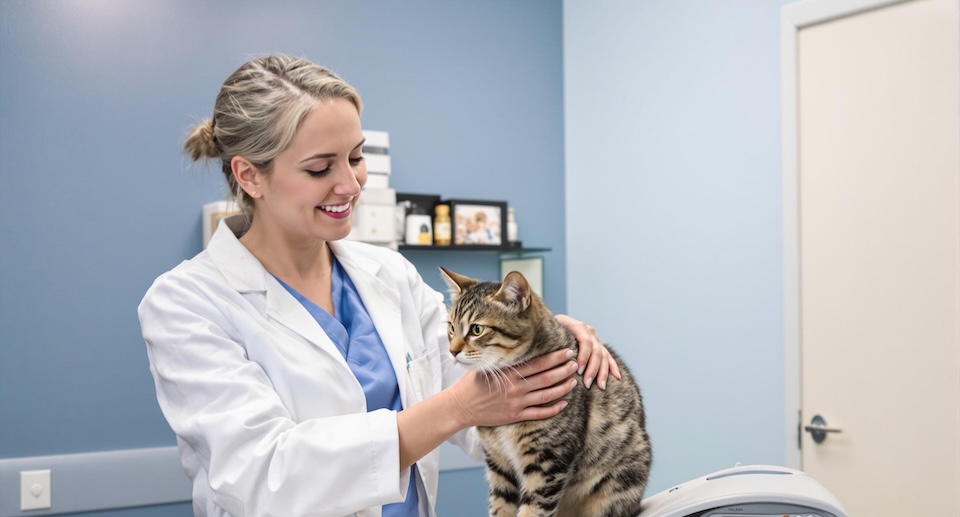What To Do When You Find A Stray Cat

As a pet parent, you can’t help but notice an animal in need. So when a stray dog or cat crosses your path, you might be wondering how to best help them. Here’s how you can reunite a lost pet with their loving family, what to do if you can’t find their owner, and what steps to take if you’re considering keeping an animal that you’ve found.
Is That Cat or Dog Actually A Stray?
Not every loose animal is a stray pet. A stray pet will usually seek out human contact, though some may be shy and will run away if you try to approach them. They will either have been abandoned by their owner, are allowed to roam, or they may be lost.
A feral cat or dog will have spent their whole life outside. They’re usually fearful of humans and might run away, bite or scratch if approached. Depending on where you live, there may be laws that protect your local feral animals. Community cats are common, especially in areas that have a Trap, Neuter, Release (TNR) program. TNR community cats are identified by a clipped ear tip, and you can leave them be if they seem safe and healthy.
What to Do When You Find A Cat or Dog
The first thing you’ll need to do when you come across a roaming cat or dog is determine if they might be a stray in need of help. Sometimes it’s obvious, for example, when the cat or dog runs up to you and seeks attention. But some stray animals are shy and fearful.
Avoid chasing the animal, even if you think they might be a stray. Sit or crouch low to the ground to avoid scaring them off, if it seems safe to do so. You can use a strong-smelling food like tuna to coax a shy animal, but avoid making sudden movements, petting them or picking them up unless they approach.
If the animal seems aggressive, is running around in traffic, or it’s otherwise unsafe for you to attempt to catch them, call your local animal control.
Reuniting A Stray Pet With Their Family
If the animal has a collar with a tag, and they’re friendly enough to allow you to approach, slowly and carefully check for an address or phone number. You can contact their owner directly and reunite them, if possible.
Some dogs or cats get lost while they are not wearing a collar. They may be microchipped. Most veterinary clinics will scan a stray animal’s microchip at no cost to you. The scanner will bring up the animals identification number and the name of the company their microchip is registered under. The veterinarian can contact the company so they can look up the owner’s contact information.
Helping A Stray Pet With No Owner
Often, stray animals do not have microchips, or their contact information is outdated and no owner can be found. In this case, the veterinarian can examine them and provide care, if needed. Each vet office has their own stray animal policy. They may have low cost services for stray animals or they may partner with a local humane society.
At this point, you can begin to search for the pet’s family. If you are able to care for the pet in the meantime, your local shelters and humane societies can help you find the owner by posting photos on their social media pages. You can put up signs, check pet lost and found websites, and ask neighbors. Often, stray pets roam just a block or two from home, so their owner may be closer than you think.
It might not be practical to keep the lost pet in your home, even temporarily while they await a call from their owner or a new home. You might have other pets in your home that cannot safely cohabitate with them, or you might simply not have the resources to provide proper care.
If you’re falling in love, and you have the resources to care for the pet, you might feel tempted to keep them. Local ordinances tend to differ, but in general you should make an effort to find their owner for at least 30 days. You may be required to leave the pet at a shelter, and then you may adopt them after a short stray holding period. Then, you can give them a name, a collar, tag, and microchip to make sure they’re never again without a home.





